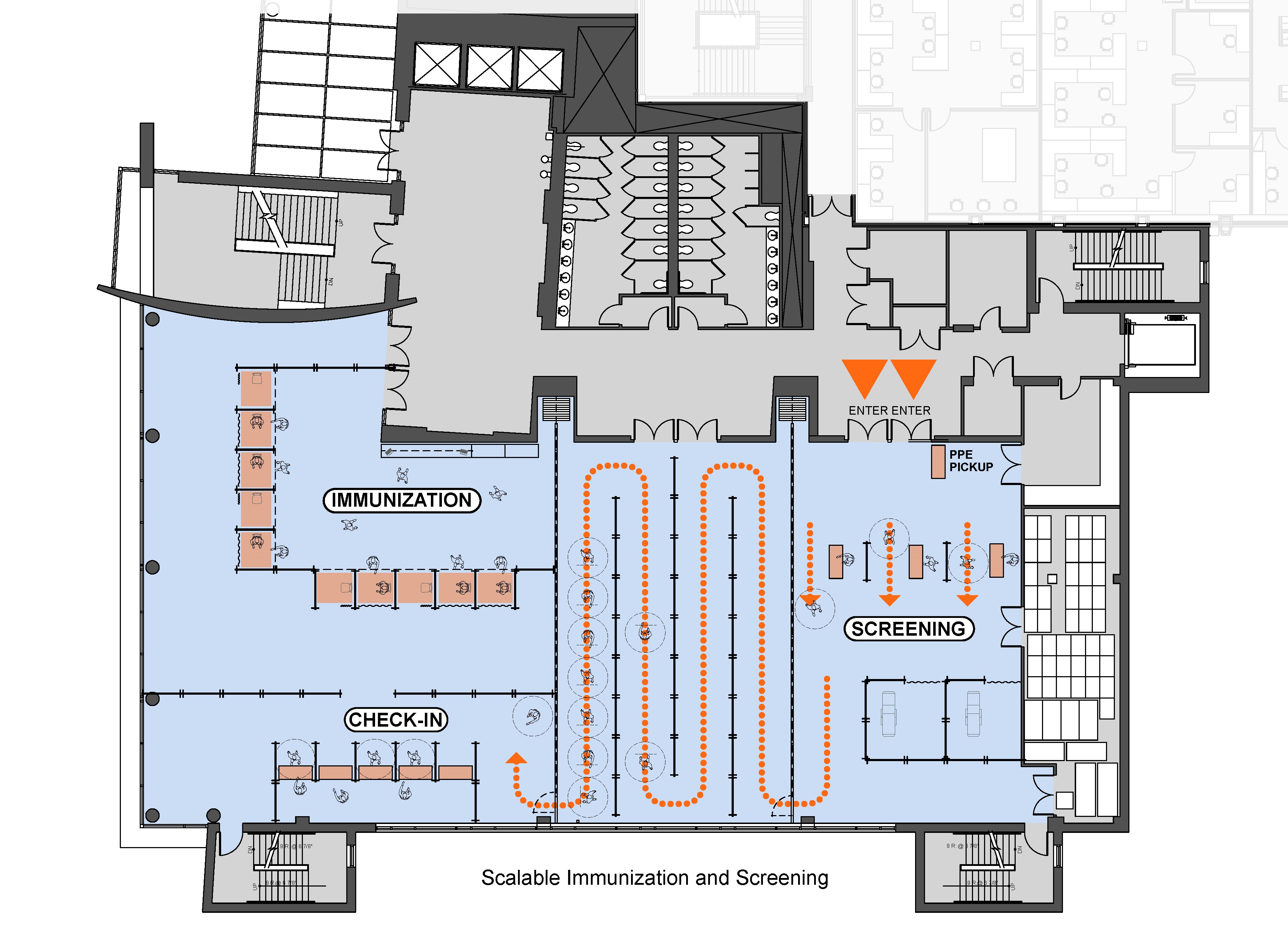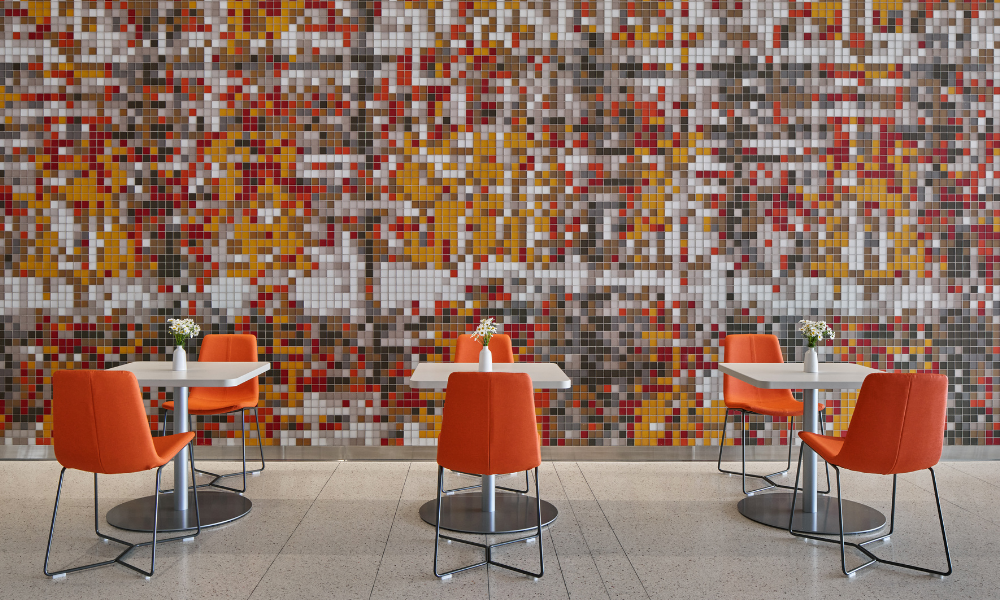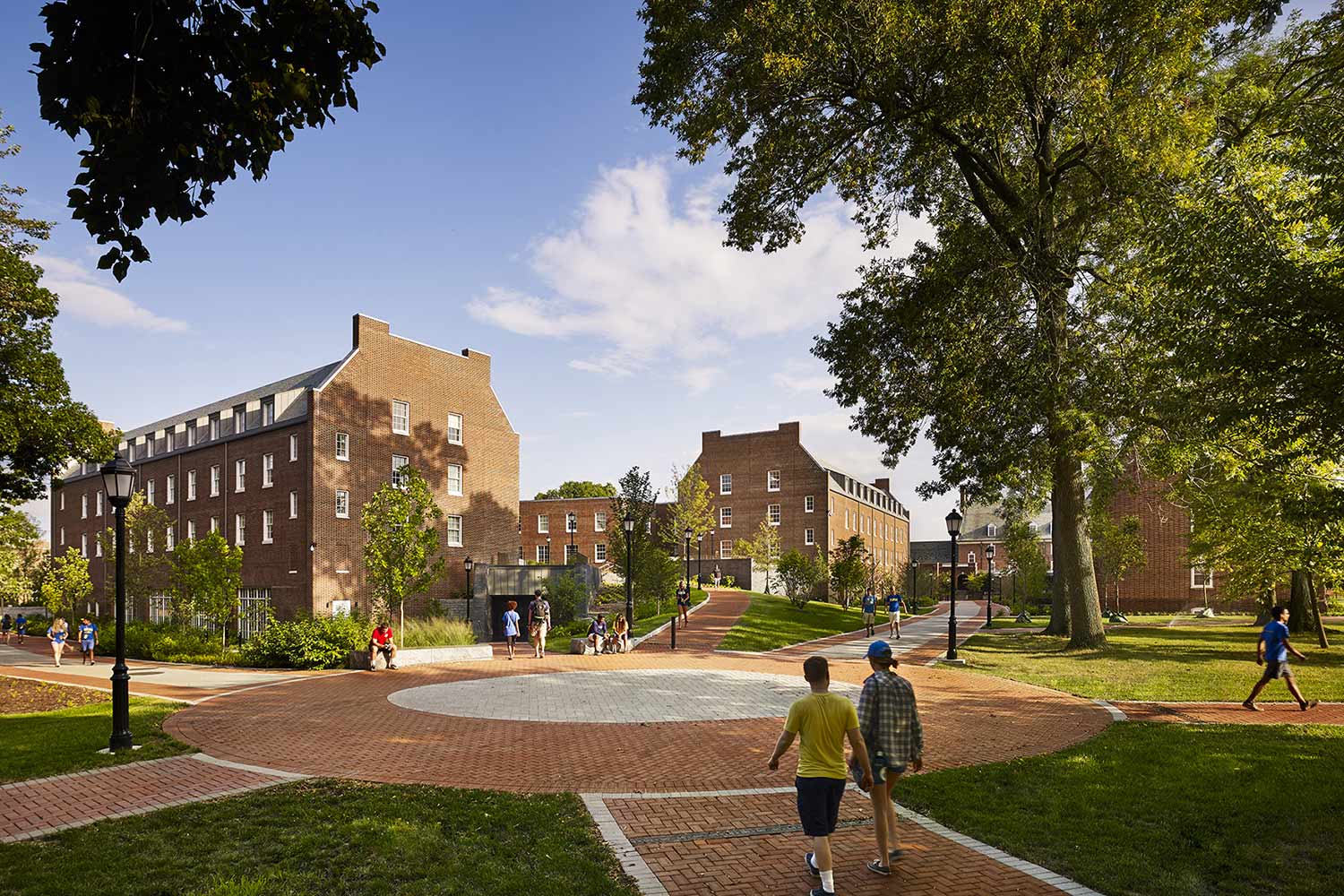
The New College Experience: Reimagining Campus and Student Life During COVID-19
The mixing of people and ideas is what fuels the model of campus life and the “college experience.” COVID-19 presents a series of challenges for university and college administrations seeking to reopen in the fall. Regardless of the outcome, campus life will be dramatically different.
As the fall semester approaches, institutions of higher learning have shifted from crisis management mode to a forward-thinking mindset. In doing so, they are calling on architects to quickly evaluate campus spaces and objectively establish temporary modalities to encourage the successes of student life while providing the support necessary to learn and socialize at a distance. Interestingly, these exercises present an opportunity to identify the best attributes of these spaces to carry forward as we design spaces for future learners. Now is the time to collect, implement, and practice fresh ideas as we move into our next normal; seeking a new normal. We recognize that there is no silver bullet, and the range of reopening strategies varies wildly from planned late starts, first-year intensives, variations of a hyflex model, and some institutions will continue to rely on a fully remote distance learning model. These hard choices are being made with consideration for the general health and wellbeing of students, faculty, and staff. Additionally, administrations and decision-makers are weighing the reality of the necessary testing/contact trace protocols, appropriate space availability, operational capacity, financial pressures, and risk management that comes with reopening before the availability of a vaccine. Whether it be a small liberal arts college in a rural setting or a large urban campus, the reality of testing and contact tracing a student body of local, out-of-state, and international populations is a monumentally complex undertaking within an already complex and anxiety-inducing environment. Campuses will need to provide the space and resources for medical staff to test entire campus populations routinely to identify, isolate, and contact-trace COVID cases quickly to ensure the safety of whole campus populations. Whatever the selected modality, the student life experience for fall 2020 will not be the same as what most students and faculty have come to expect. Overcoming the initial anxiety for new and returning students requires simple and thoughtful design.
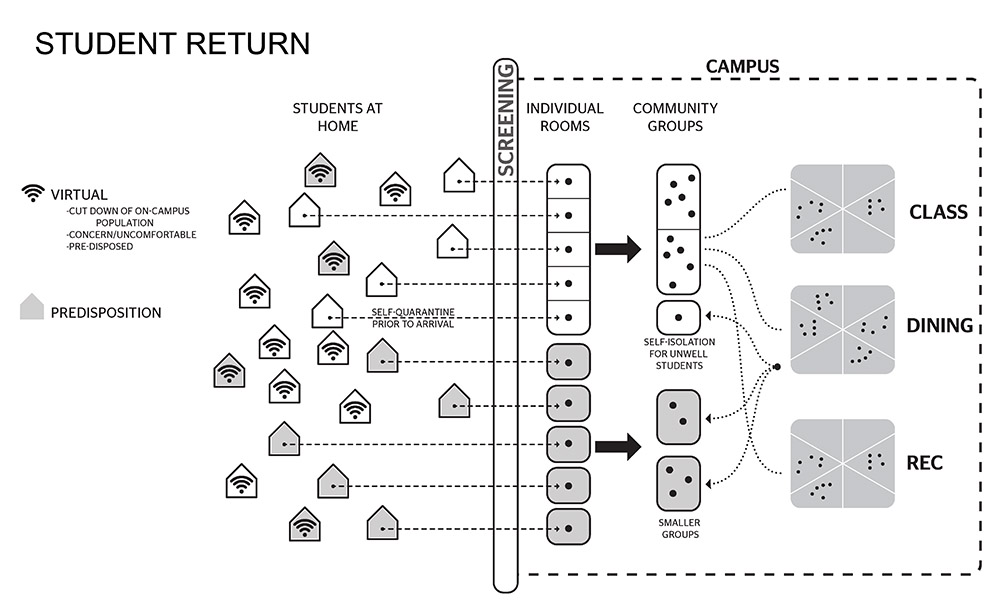
Many administrations are in a bind. In addition to dental, medical, performing arts, and trade-related programs, distance learning platforms cannot accommodate many aspects of student life. There is also addressing issues of equity and access on campus. In all of this, we cannot forget that some students do not have the resources (high-speed internet and personal computers) or safe and appropriate space to learn remotely. Not being able to provide physical access to campus resources is out of the question for some students and faculty.
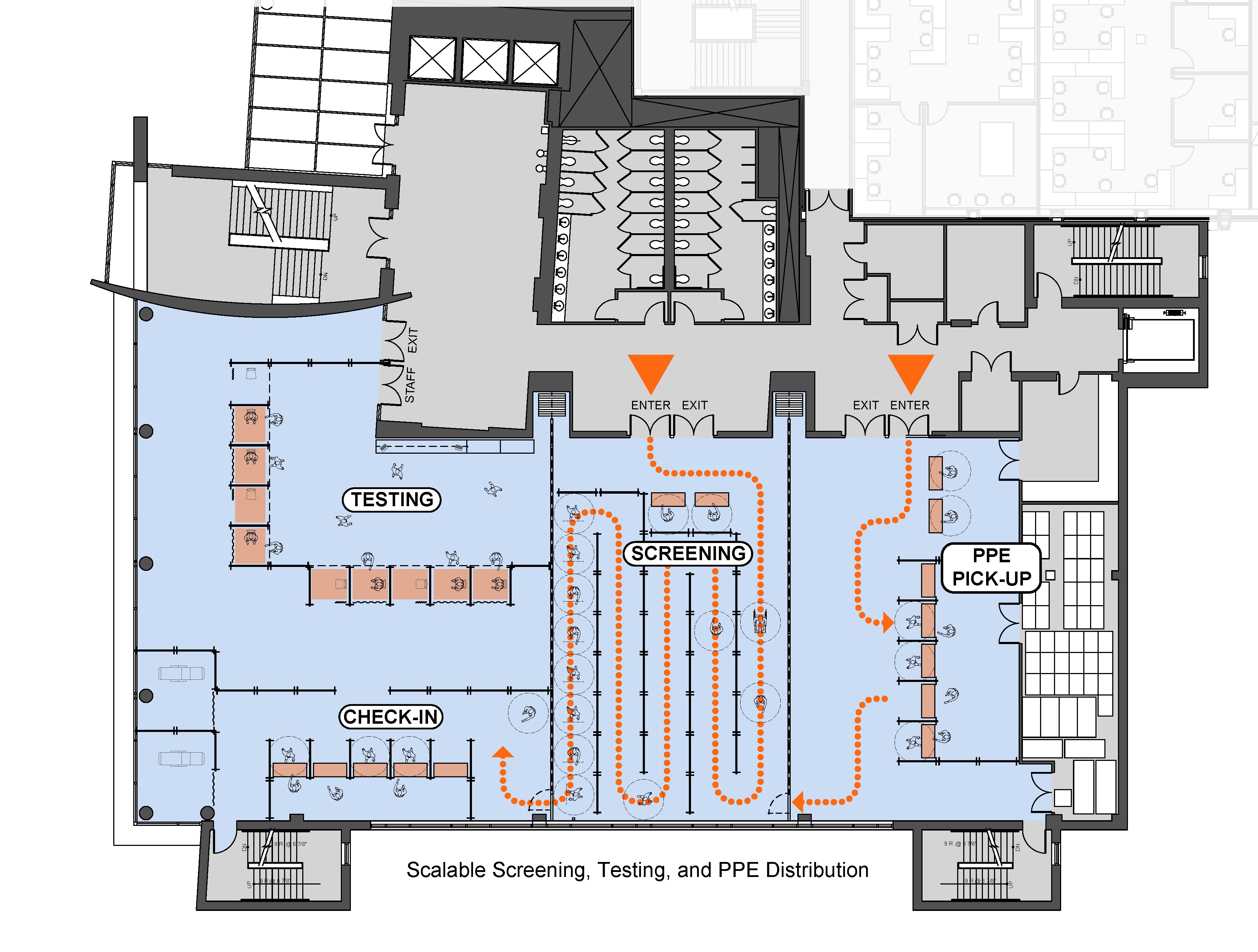
COLLECTIVE RESPONSIBILITY
Our role as designers continues to be focused on student success. That includes helping institutions provide the safest environment possible for students, faculty, and staff should they choose to open their doors in the fall. In the near term, that means reimagining existing building programs and campus services and identifying areas to support and encourage social distancing etiquette. Certain aspects of this exercise apply to all building uses, and others are unique to specific uses. Collectively employing many of the protocols established by the essential businesses operational during this pandemic can instill a sense of safety and help to minimize the transmission of the coronavirus.

In a campus environment, social isolation is counter to the purpose of a college or university.
Instead of complete isolation, institutions will need to understand and employ sets of engineered controls campus-wide. These range from adjustment to building ventilation systems, directing traffic flow via wayfinding signage to minimize hot spots, implementation of touch-free/contactless solutions where possible, arranging and marking furniture to encourage distancing recommendations, and physical barriers.
In addition to the engineered controls, there are a series of program controls that an institution may employ. Actual de-densification will require physically having fewer people in a place by way of reducing the number of students per section, staggering schedules, and implementing a combination of synchronous and asynchronous learning tools that are available. Focused efforts to provide regular and visible cleaning throughout the campus will be required to complement hygiene stations added for handwashing.
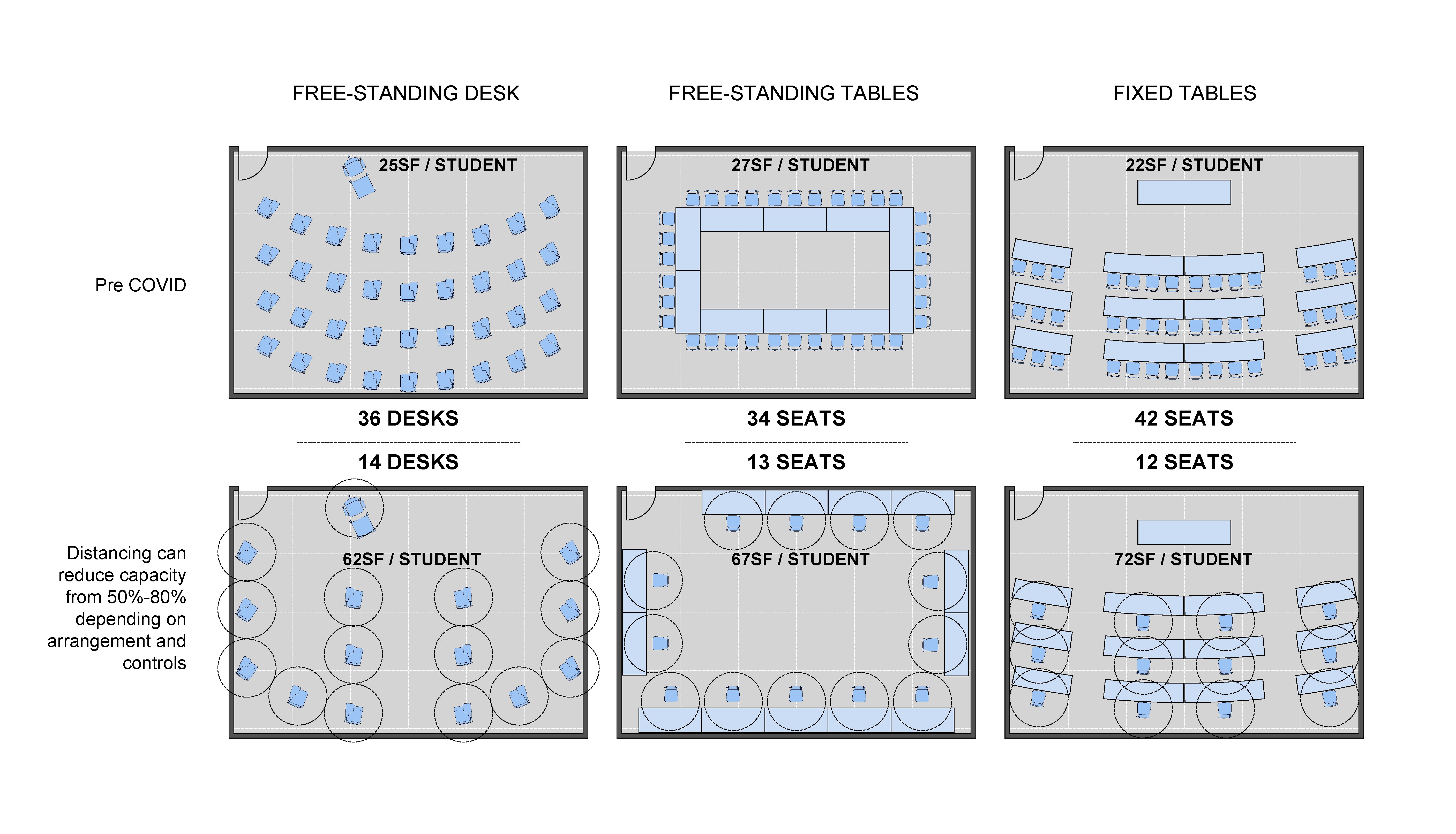
WHAT PHYSICAL SPACES WILL HAVE TO CHANGE?
There are building typology specific and spatial issues to consider to support the implementation of engineered controls, program controls, and to encourage everyone to take personal responsibility. Here are only a few of the many items to consider as we seek to reduce the risk of COVID-19 infection and a recurrent surge of infections when activities resume on a campus.
Entries/Lobbies
Most campus buildings have a central point of entry/exit, and many points of egress often reserved for emergencies. One suggestion is to have people enter a building from a single point of entry but exit from another to reduce congestion. This will need evaluation on a case by case basis for feasibility, as well as the overall safety and security of building occupants. Other entry specific considerations would be:
- Screening stations for temperature checks and survey response.
- Hygiene stations with hand sanitizer.
- Signage highlighting movement expectations through the building and distancing etiquette.

Circulation
Defining the directional flow of movement through a facility is advisable. By doing this, one can reduce the number of times people pass each other and minimize the risk of close contact. Depending on the size of the building, it may be prudent to suggest using specific stairs on the up direction and another for the down direction. For facilities that utilize elevators, there will be limits to the number of passengers depending on cab size and other factors. The elevator lobby will need clear signage, offering occupants direction regarding the ride limits and waiting etiquette.
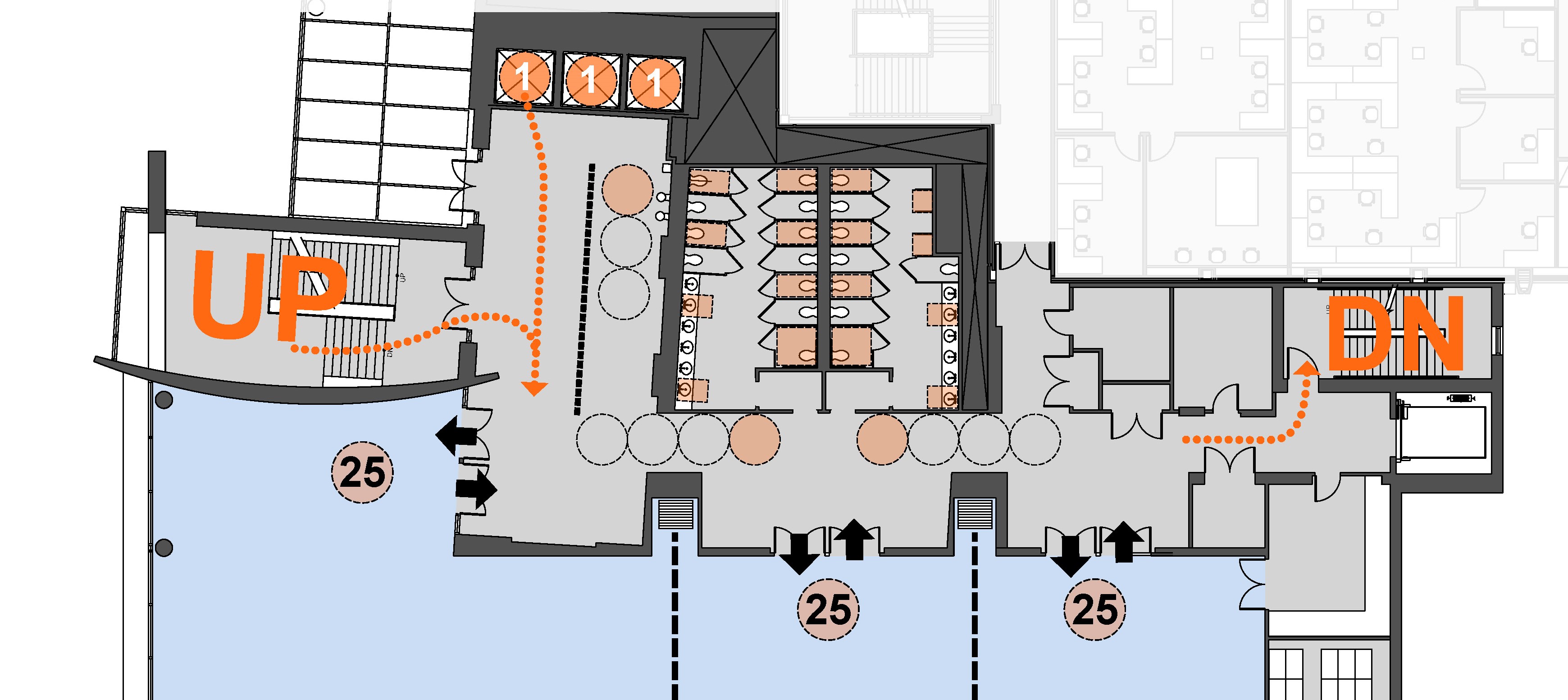
Lecture Halls/Classrooms
These rooms are some of the more prominent and frequented spaces of a campus community. The decreased occupancy capacity of any given room will be based on the kinds of seating and circulation available. A fixed-seat, raked auditorium has much less flexibility than a flat-floored space. With that in mind, rooms not customarily considered for academic learning may now find a new life as the demand for space is temporarily increased. These larger rooms will play an important role in providing smaller class sections the opportunity to physically gather together in a safe manner. Other items to consider may include:
- Developing an understanding of the airflow in the room.
- Indicating separate doors to enter and leave the room.
- Providing directional signage to inform movement through the room.
- Color coding or marking seats to be used during class.
- Removing desks and/or chairs that d violate distancing guidelines.
- Utilizing or incorporating technology to allow for remote synchronous learning.
- Planning for time(s) for the room and its contents to be cleaned.
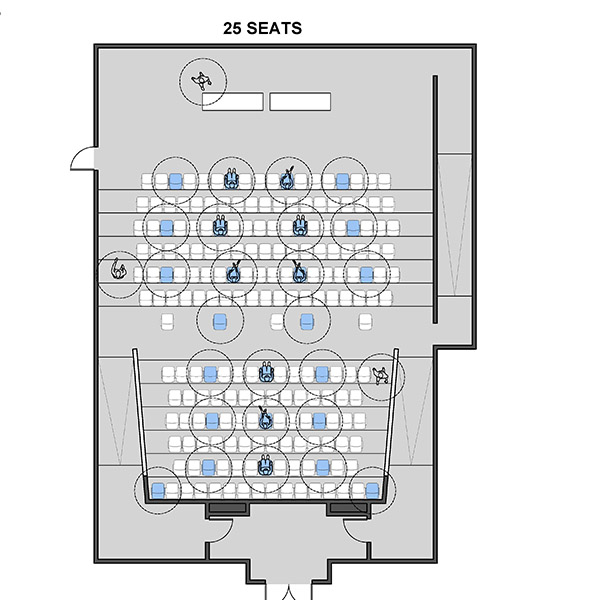
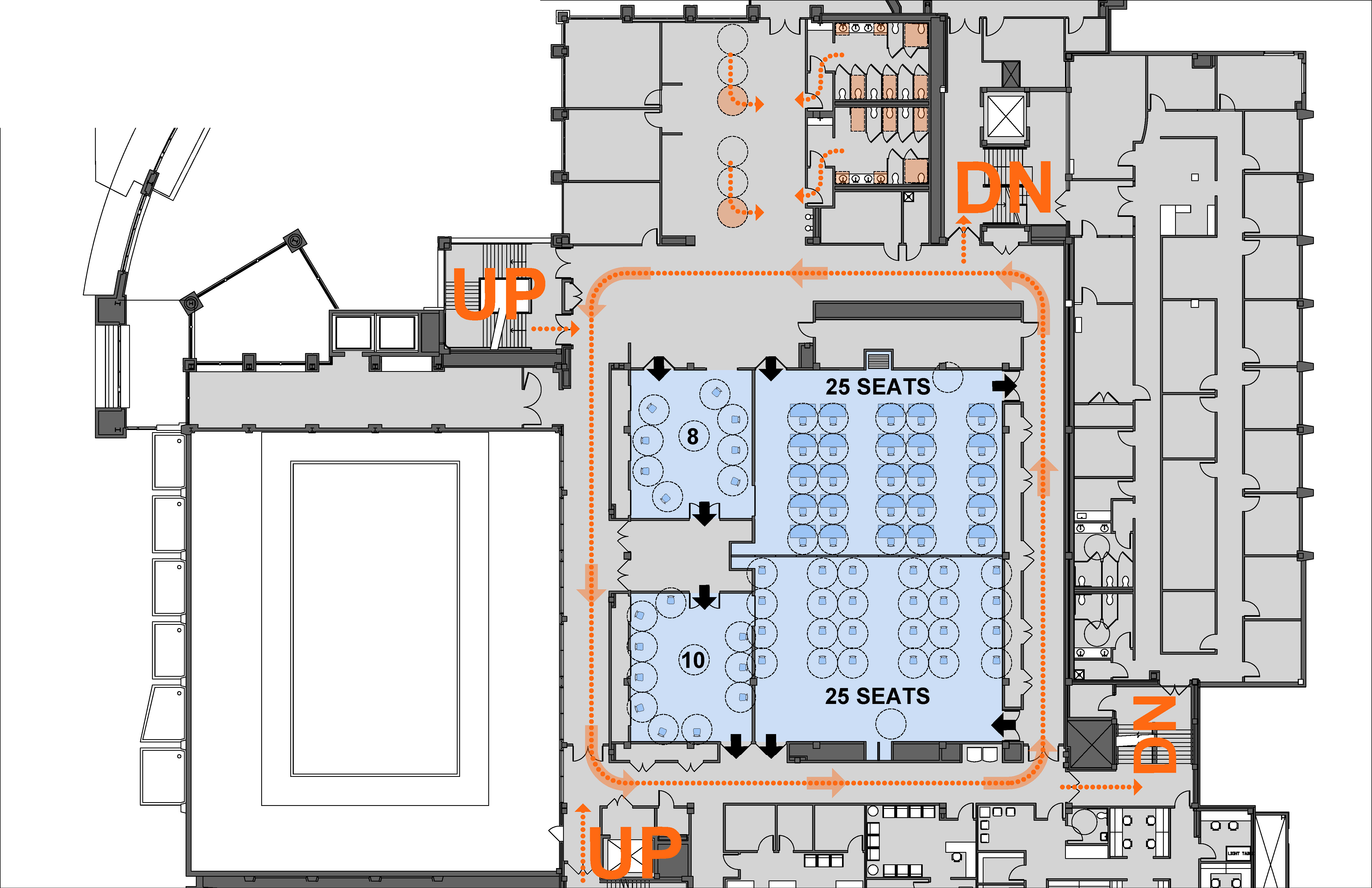
Residence Halls
Campus student housing is designed to encourage students to congregate, study, and socialize. It is within these buildings that there is the opportunity to connect with fellow students from various locales and be part of a larger community. This setting will prove difficult to maintain physical distancing recommendations. These facilities should incorporate the suggestion for entries and circulation along with other typology specific considerations.
- Single student per sleeping room (ideally with private bathroom).
- Designating zones of buildings for vulnerable student populations
- Reserving an appropriate number of rooms for dedicated quarantine.
- Reconfiguring furniture in common areas to encourage socialization while adhering to physical distancing recommendations.
- Frequent cleaning of any shared restroom and shower facilities.
- Enhancing the cleaning of all common areas.
- Restricting events and non-residents.
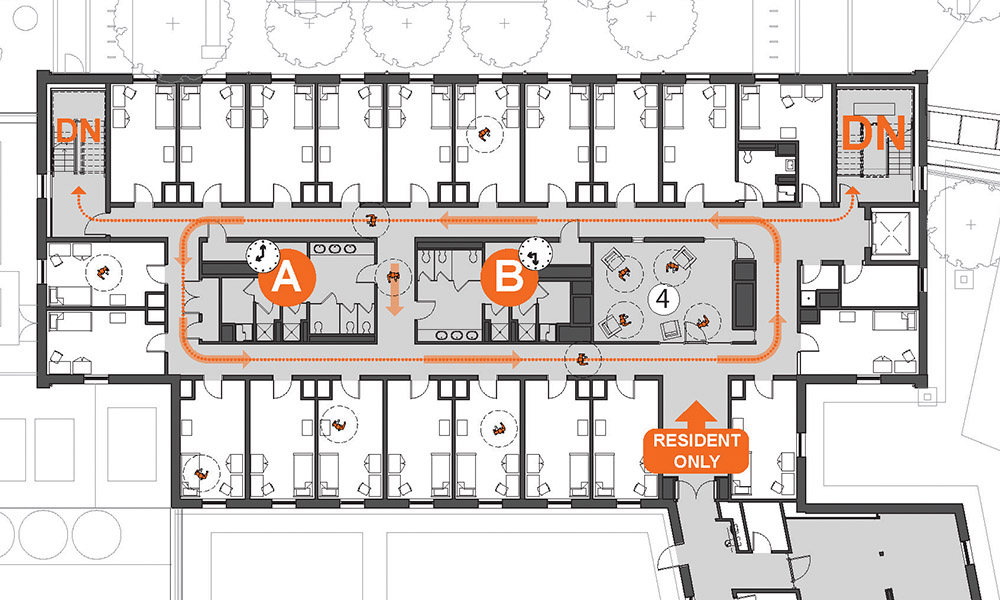
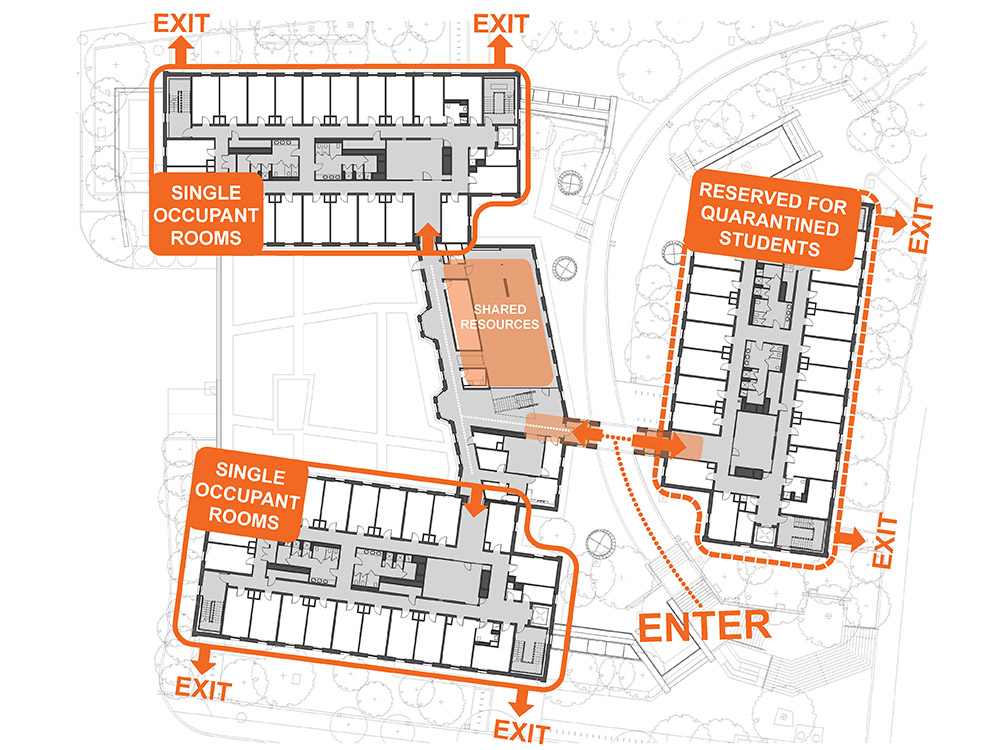
Dining and Food Service
The foodservice environment on campus is a particularly complex space with lots of interactions and touchpoints. Foodservice operators will need to adopt the same back of house practices that have been successfully implemented by restaurants who have been operating take-out and delivery models. The campus-specific considerations may include:
- Hygiene stations with hand sanitizer.
- Distanced queuing systems for grab and go meals.
- Plexiglass screens for food service workers.
- Touchless POS systems.
- Disposable utensils and dishes (evaluation of dish drop / dishwasher protocols).
- Elimination of all self-serve and buffet-style services.
- Reconfigured seating for physical distancing
- A reservation system with a reduced number and specific groups of diners.
- Time to disinfect dining areas between scheduled groups.
- HVAC airflow should be understood and inform seating arrangements where possible.
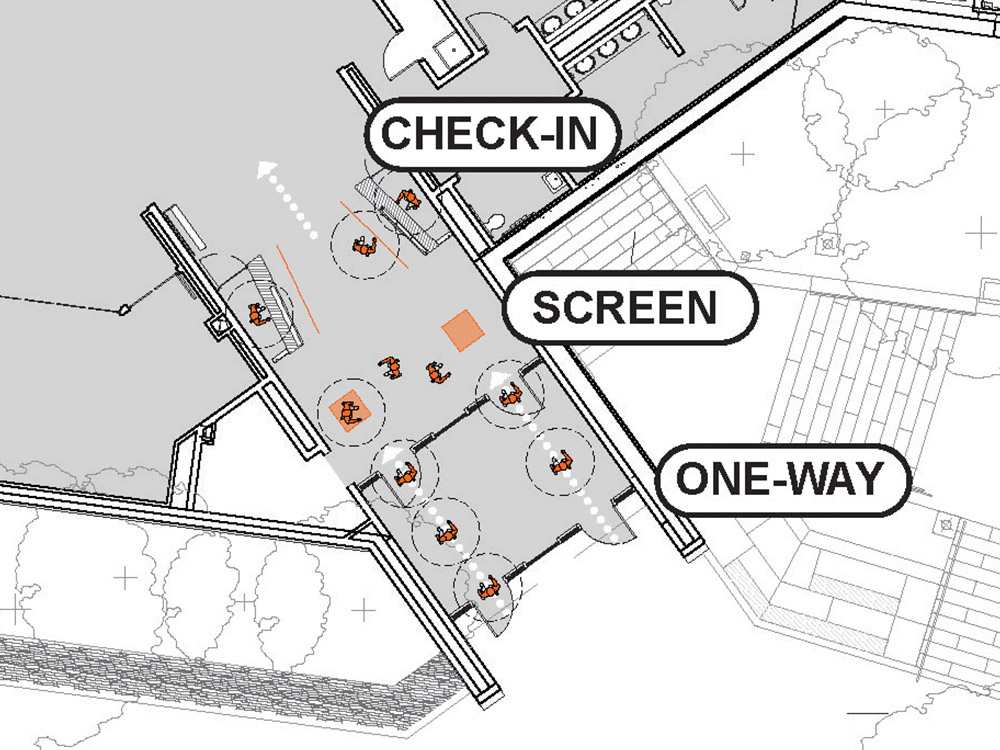
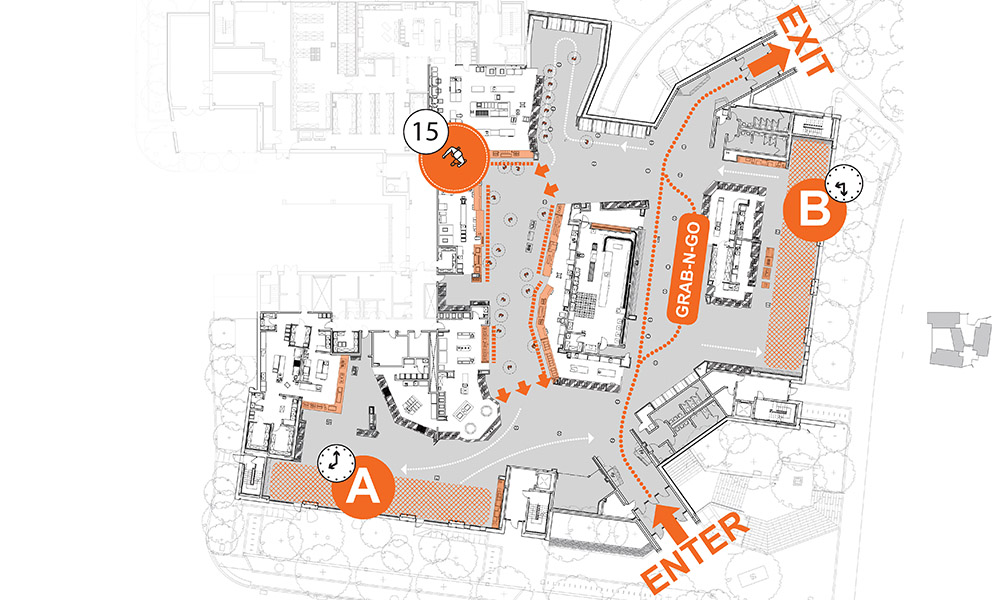
Student Centers
Often at the heart of campus, the student center is designed to be the place for shared activity and personal interactions of individuals. Here student life is supported by a variety of programs for students to re-energize, participate in spontaneous events, and come together in community for a shared purpose. In the event of campus opening, the student center potentially takes on the role of providing space for health and wellness needs and academic support space while offering its usual function as a place of reprieve. These kinds of interactive, multi-programmed, social buildings need clear directions for suggested circulation patterns along with educational signage as reminders of the expected behaviors and etiquette both on and off-campus. When we think of the student center during this pandemic, one has to think at the campus scale of finding new uses for what may be underutilized space through the details of the enhanced cleaning requirements.
- De-silo spaces to maximize scheduling for academic uses.
- Use larger event spaces as multipurpose rooms across the academic calendar for academic as well as health and wellness uses.
- Tech ready spaces to support online, augmented or virtual reality events.
- Dedicated space for the food pantry to aid the fight against food insecurities.
- Enhanced and visible cleaning regimen.
- Removal or covering of sift furniture that cannot withstand the requirement of enhanced cleaning.
- Seating reconfigurations to promote physical distancing and still encourage social interaction.
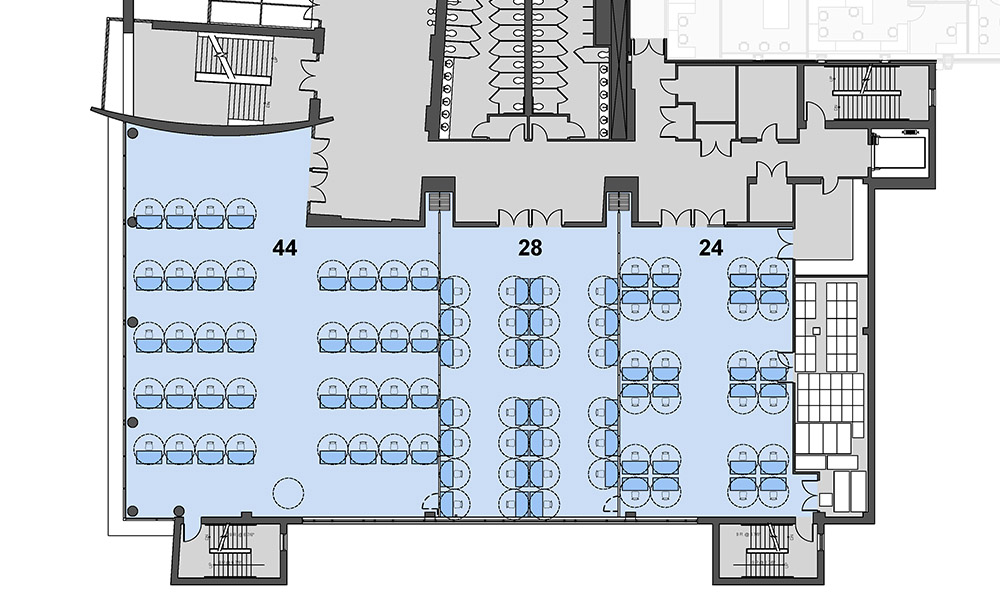
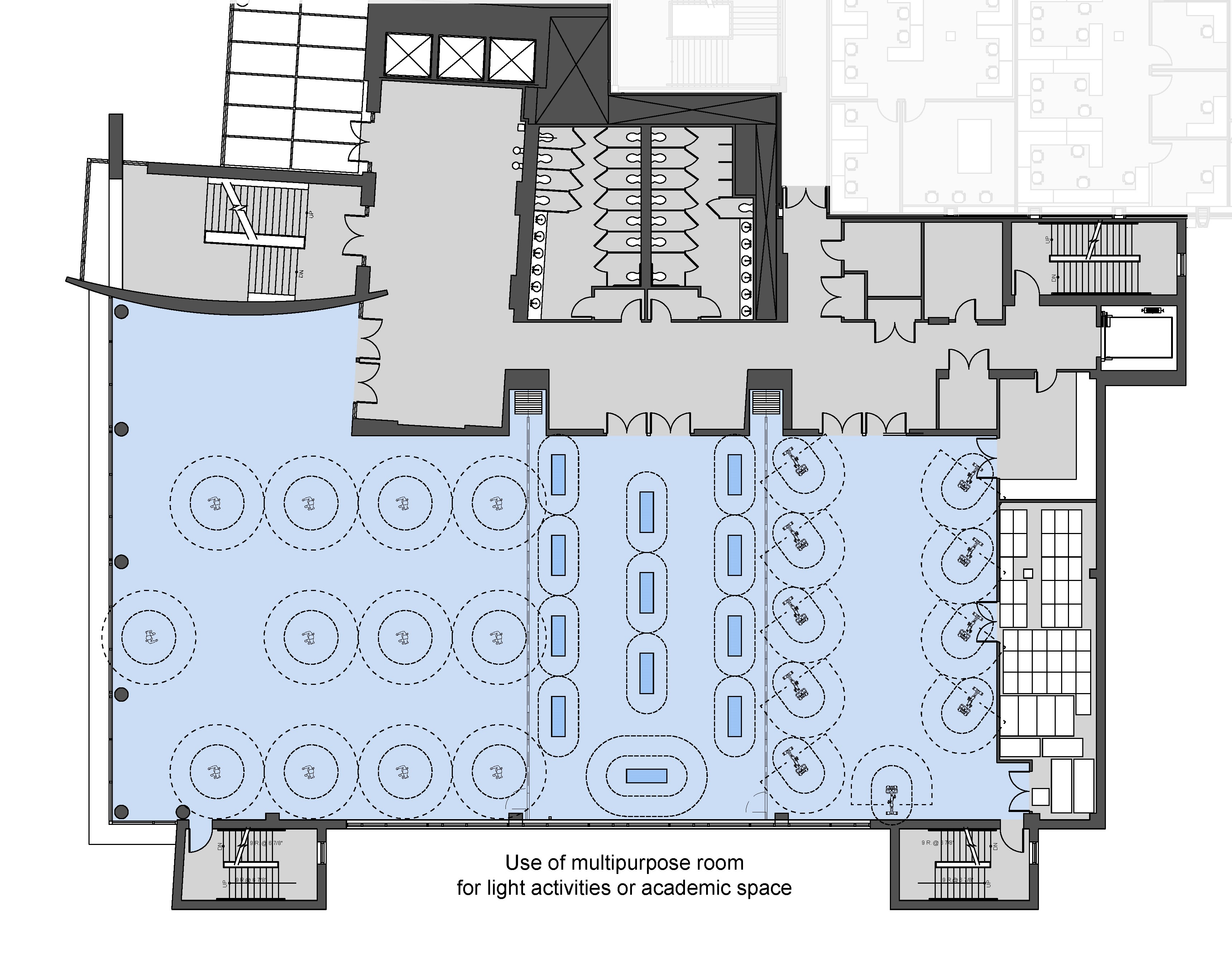
Student Health Centers
The services provided by student health centers on campus become even more crucial during the season of this health crisis. Our current condition has only highlighted the demand for health services (both mental and physical) that have historically been underresourced. Anticipating an increased need to test, isolate, and treat infected patients, institutions may consider identifying strategic places on campus to accommodate additional space needs such as:
- Segregated waiting areas for well and ill patients.
- Plexiglass barriers for reception staff.
- Storage for necessary testing kits, PPE, and medical supplies.
- Large multipurpose space to be used for mass vaccination, screening, and training.
- Use of same multipurpose space for scheduled wellness activities.
- Space and IT infrastructure set up to provide enhanced telehealth services.
- Adequate HVAC to ensure appropriate air exchange between patients.
Sports and Recreation Spaces
Recreation is a vital component of student life experience, as it relates to being part of a larger community and promotion of individual wellness. While the reintroduction of contact sport is unlikely in the initial phases of reopening, the large open spaces of recreation centers offer opportunities for a variety of activities and flexible use of space usually reserved for contact sport. Distancing guidelines larger than six feet, and the understanding of mechanical air exchange are important to consider due to the high activity levels in these kinds of facilities. Other thoughts for consideration would be:
- Using large open space for mass testing stations.
- Relocating cardio equipment to underutilized gymnasium space to allow for physical distance.
- Creating indicators of social distance spaces.
- Eliminating spectators at live games/events.
- Limiting access to gyms and recreation facilities (consider scheduling system).
- Using smaller rooms to create on-line content (both synchronous and asynchronous).
- Encouraging use of outdoor spaces where possible.
Laboratories and Maker Spaces
The hands-on learning and research that occurs in laboratories and maker spaces is the type of activity that cannot be replaced with on-line tools currently available. By their very nature, most of these spaces can be somewhat easily adapted to accommodate the various distancing and hygiene guidelines prescribed as part of broader reopen strategies.
- Scheduled use – small group or individuals
- Enhanced cleaning/disinfecting measures
LOOKING Ahead
Like other historic, global events, the COVID-19 pandemic will result in lasting changes for years to come. How we interact with each other and the built environment will undoubtedly be impacted. Our heightened awareness of spatial relationships, hygiene, and the greater public health will shape the design of campuses in the not-so-distant future. The sobering effect of our current reality has brought many trends of higher learning to the fore. Colleges and universities were already working hard to tackle larger trends such as declining enrollments, social equity, mental health, underfunded programming, food and housing insecurities and many more. These complex issues will only be exacerbated in a post-COVID world forcing designers to refocus our attention to these problems through a different lens.
